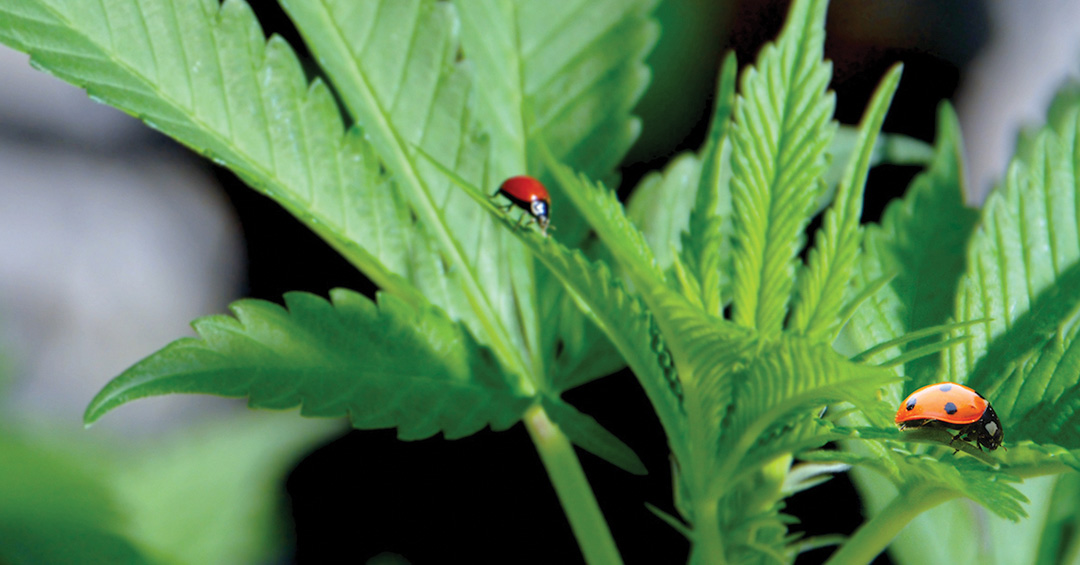Cultivating cannabis, whether indoors or outdoors, can have a substantial environmental impact. Growers face the challenge of balancing the adverse effects of growing practices—including water consumption, pesticides, excessive energy consumption and packaging waste—with selling products in a highly competitive market. At Autumn Brands, we take conscientious cannabis cultivation seriously. That’s why we only use sustainable farming techniques, natural sunlight, and a no-spray 100% biocontrol program to grow some of the best cannabis in California.
Benefits of Conscientious Cannabis Cultivation
Nestled between the Pacific Ocean and the Santa Ynez Mountains, our greenhouses are optimized for maximum sunshine to bring out diverse cannabinoid and rich terpene profiles. We’ve been championing sustainable practices that prioritize the health of our planet and its inhabitants since 2018, when we began cultivating 100% spray-free, which means we use zero pesticides, including eliminating all organic pesticides that could potentially be harmful when inhaled. We’re committed to cultivating cannabis in harmony with nature, preserving the beauty and bounty of our planet for future generations.
Recent studies have shown why conscientious cannabis cultivation makes more sense for people—and the plant. Read on to explore the tangible benefits of spray-free, sun-grown cannabis, backed by factual evidence and real-world impact.

Preservation of Ecosystems
Our spray-free, sun-grown practices reduce reliance on pesticides and synthetic fertilizers, protecting delicate ecosystems. According to a study by the Pesticide Action Network, chemical-intensive agriculture contributes to habitat destruction and biodiversity loss. By minimizing chemical inputs, growers can preserve ecological balance.
Reduction of Environmental Footprint
Traditional indoor cannabis cultivation consumes significant energy and resources, with estimates suggesting it accounts for 1% of total US electricity usage. In contrast, sun-grown cultivation relies on natural sunlight and soil fertility, reducing carbon emissions and resource depletion. Transitioning to outdoor cultivation can significantly lower the carbon footprint of cannabis production, aligning with global efforts to combat climate change.
Protection of Public Health
The use of pesticides in crop cultivation is not new, and cannabis crops are no exception. Studies have found that high levels of the pesticides used in cannabis cultivation are transferred into the cannabis smoke. By opting for spray-free cannabis, consumers can mitigate exposure to harmful chemicals and prioritize their well-being.
Promotion of Sustainable Agriculture
Greenhouse-grown cannabis embodies sustainable agriculture principles, promoting soil conservation and ecosystem resilience. A study published in Nature Sustainability highlights the environmental benefits of agroecological practices, such as crop diversification and natural pest management. In recognition of the natural ecosystem in our greenhouses, native California Ladybugs found their way into our greenhouses and have never left. Their larvae are some of our best pest eliminators—and they do it for free!
Connection to the Land and Community
Cultivating cannabis gives a connection to the land and local community. According to a National Center for Appropriate Technology survey, consumers prioritize supporting environmentally friendly practices and local farmers. Our care for the environment doesn’t end in the greenhouses; all our packaging is consciously chosen so that it can either be reused or composted. We are committed to our planet’s sustainability and ensuring humans, animals and the earth remain healthy and viable.


